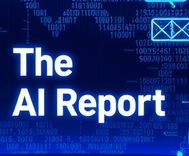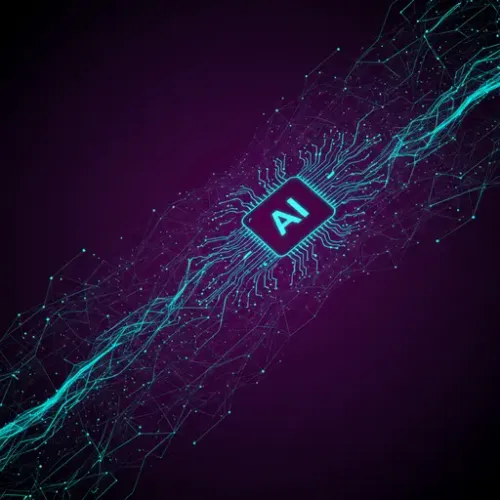Artificial intelligence is changing production companies, here’s how

The AI Report
Daily AI, ML, LLM and agents news
The world of commercial production is undergoing a seismic shift. For years, artificial intelligence in video felt like a distant promise, a niche experiment. But in recent months, we’ve witnessed a quantum leap in generative AI video technology, pushing it from speculative hype to hands-on, production-ready reality. This isn't just a technical upgrade; it's a fundamental reimagining of creative possibility and workflow. Are you prepared to navigate this rapidly evolving landscape, or risk being left behind?
The AI Tipping Point: From Nightmare Fuel to Creative Canvas
Remember the uncanny valley nightmares of early AI-generated video – Will Smith eating spaghetti with unsettling results? Fast forward to today, and platforms like Sora, Runway, Luma, and Google's Veo 3 are delivering shockingly advanced, realistic, and stable outputs, complete with synchronized native audio. This rapid improvement has moved AI video beyond mere novelty, making it a viable and increasingly sought-after tool for high-quality commercial content.
For agencies and production teams, this means a pivotal moment. What was once a 'trickle' of AI interest from clients is now a 'steady flow,' according to industry veterans. The quality is simply too good to ignore, opening doors to ambitious visual storytelling previously constrained by traditional methods.
A New Generation of Creators and Evolving Models
This technological acceleration has naturally birthed a new breed of production entities. Some, like Australia's AiCandy or Belgium's AiCandy (unrelated, yet similarly named), have emerged entirely from scratch, founded by experienced producers and creatives eager to harness AI's raw power. They're signing exclusive rosters of AI film directors, bringing a fresh, specialized offering to the market.
Meanwhile, established players are not standing still. Companies like The Sweetshop have integrated AI into their directors' toolkits and launched dedicated AI creative studios. Others, such as Made By Humans, are curating rosters of AI artists backed by deep production expertise. Even agencies like Pereira O’Dell have spun out AI innovation labs like Silverside AI, embracing the pioneer spirit despite initial skepticism. This diversification of models signals a flexible, adaptive future where AI capabilities are either core to a new venture or seamlessly integrated into existing structures.
Unlocking Ambition: Clients, Budgets, and the Creative Frontier
Who is embracing this change most readily? Interestingly, it's often startups and small-to-medium enterprises leading the charge. Unburdened by the extensive legal teams of multinational corporations, these agile clients are more willing to explore the creative and budgetary opportunities that generative AI presents. They've discovered that once-unattainable, large-scale concepts can now be brought to life with more modest marketing budgets. Imagine turning consultants into spec-ops spies for a B2B campaign – that’s the kind of outlandish ambition AI makes accessible.
While the initial instinct might be to fear a 'race to the bottom' on cost, the reality is more nuanced. Quality AI production demands skill, creativity, and time. However, it effectively stretches budgets, allowing both smaller clients to dream bigger and larger clients to achieve more extensive asset creation, fostering a new era of creative accessibility.
Beyond the Prompt: The Indispensable Role of Craft and Complexity
The misconception persists that AI video is as simple as typing a prompt and pressing a button. This couldn't be further from the truth. The industry is already grappling with 'slop' – low-effort, poorly produced content flooding feeds. The antidote? Unwavering dedication to storytelling, film craft, and deep production know-how.
Experts emphasize that understanding the language of film—composition, pacing, emotional resonance—is paramount. Handing the keys to an AI tool to someone without this foundational craft will inevitably lead to 'vanilla' results. Producing high-quality AI video requires intricate workflows, combining various AI tools, iterative refinement, and a steady hand to maintain consistency and align with brand demands. The producer’s ability to bridge client expectations with technical execution becomes even more critical in this iterative, probability-driven creative process. AI democratizes the tools, but it amplifies the need for genuine creative vision and meticulous execution.
The Blended Future: AI as an Integral Tool
The choice between 'AI' or 'traditional' production is increasingly a false dichotomy. The most effective approach is often a blend. Highly AI-centric projects still benefit from traditional compositing or color grading, just as seemingly conventional jobs can leverage AI for challenging or budget-sensitive shots. AI is becoming another arrow in the quiver, alongside stop-motion, CG animation, or live-action filmmaking.
This convergence also blurs traditional job roles. Editors, once confined to timing and sequence, now find their storytelling prowess liberating them to 'direct' with AI. The industrialization of the creative process, with its rigid boxes and hierarchies, is being challenged. As more AI-focused production companies emerge, we'll see further evolution in business models and organizational structures, prioritizing fluid, collaborative approaches over fixed paradigms.
Embrace the Evolution, Master the Craft
The AI revolution in production is not a threat to creativity; it’s an invitation to redefine it. This moment calls for courage, experimentation, and an unwavering commitment to storytelling. The future belongs to those who embrace new tools, respect foundational craft, and remain agile in a landscape that changes at breakneck speed. What new stories will you tell when the only limit is your imagination?

The AI Report
Author bio: Daily AI, ML, LLM and agents news
